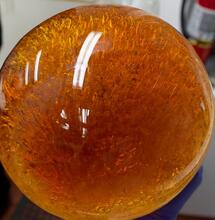Hemp in Fashion. It’s a Thing Now.

Hemp has a long tradition of use. For centuries, hemp has been used to produce things like rope, paper, furniture and clothes, among other things. Hemp clothings might not be as soft as silk or linen, but still, over time the fiber actually softens. And then there are its other benefits. Hemp’s unmatched ability to absorb moisture and textiles to retain color.
Hemp has never been the go-to fiber choice in fashion. Perhaps the big reason why is that, is hemp's historical association with baggy, khaki-colored hippie clothes. But hey, the world is finally coming to its senses.
In recent years, nobody can deny the environmental benefit of hemp cultivation, and hemp’s potential to use in clothing manufacture. There are now more choices than ever to suit everyone’s taste (not just hippies, yay).
More clothing brands than ever highlight that they make their brands from hemp. Some of hemp’s advantages is that it’s durable, porous, and breathable material. Examples of clothing and apparel commonly made with hemp include tunics, t-shirts, skirts, pants, jackets, hoodies, footwear, bags. Practically everything you can imagine.
Hemp is Sustainable Clothing Resource
Hemp fiber is processed from hemp plants, which is different from sativa and indica cultivars used for flower production, smoking and cannabinoid extraction.
Hemp plants provide long and strong plant fiber. More efficient than other crops, hemp uses only a fraction of water that crops like cotton demand during cultivation and processing. Sometimes all a hemp plantation really needs is rain water.
Hemp crops also bring several other benefits to the environment. First, the roots which move down the earth like tentacles: roots can grow twelve inches in length in the course of a month, which helps prevent topsoil erosion.
At the same time, the workings of the roots do not degrade the condition of the soil. While cotton and other crops can deplete the soil of nutrients, hemp can be grown for many years without draining the soil's nutritional value.
Another reason is that hemp is less vulnerable to pests, therefore farmers don’t need to routinely use fertilizers and pesticides for growing. This makes hemp safe also for bee populations, with recent research indicating that industrial hemp is an important nutrient source for pollinators when other nectar sources begin to disappear with the change of seasons.
What Are the Advantages of Hemp Fabric?
With all environmental gains factoring in, it’s easy to understand why hemp clothing brands are popping regularly within the slow fashion movement. Hemp is one of the most sustainable fabrics available, but it also has other important qualities. Below are some of them:
- Hemp fiber has four times the strength of cotton, thus it’s more resistant to wear and tear.
- Hemp is breathable, resisting bacterial growth and preventing odors.
- Hemp is also very porous, allowing the fabric to breathe and keep you cool on warm days.
- Hemp textiles further protect the skin by preventing UV exposure.
- It may look like more hard material in the beginning, but as you wear it, it does soften without weakening.
- Hemp is superior water-absorbent, also much more absorptive with dyes than cotton, making it less likely for colors to wear off.
- It can be blended with other materials, and can have versatile uses.
Other Uses of Hemp
Hemp can substitute plant-based plastics like cellophane and cellulose-based plastics. It can also be used as in biodegradable inks, paints and varnishes. In construction, hemp can be used as in bricks, panels, beams, and posts, basically all the stuff you need to build a house. Hemp hurds (or the inner fiber) can be mixed with limestone and water to make hemp-based concrete.
Last but not least, hemp-based animal feeds are safe food alternative for cattle. Cows fed with hemp retain low levels of cannabinoids, with dairy products shown to be safe for human consumption.
So, hemp not only has the potential to change clothing brands and fashion, it does have the potential to make much of the world more environment-friendly.
Also read on Soft Secrets:
- Can Cannabis Help with Sustainability?














